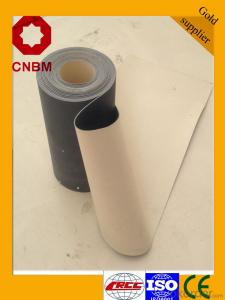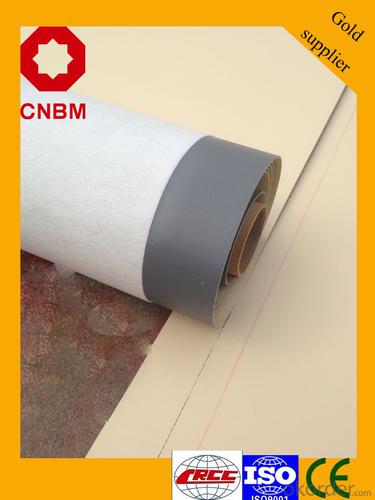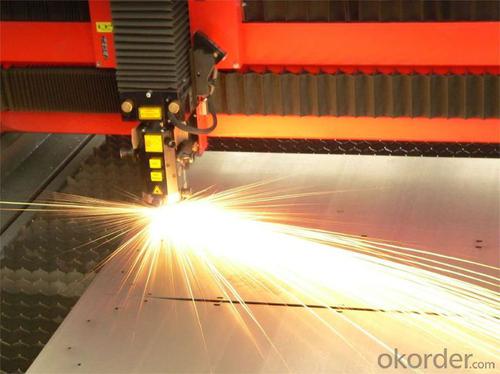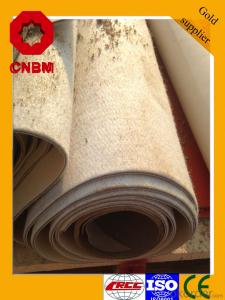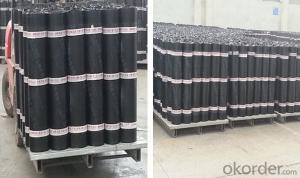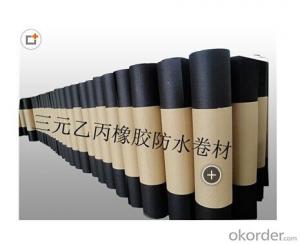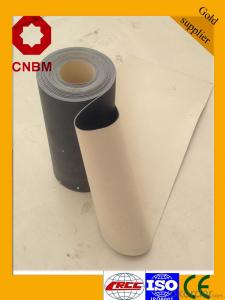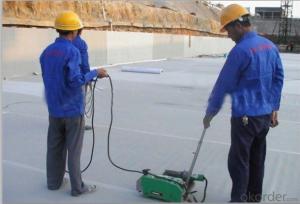Chinese Manufacturer Used In Roof PVC Waterproof Membrane
- Loading Port:
- Tianjin
- Payment Terms:
- TT OR LC
- Min Order Qty:
- 2000 m²
- Supply Capability:
- 10000 m²/month
OKorder Service Pledge
OKorder Financial Service
You Might Also Like
Product description
The PVC waterproofing rolls formulas are based upon polyvinyl chloride resin with other assistants added to provide flexibility and stability such as anti-oxidant,absorbent of ultraviolet light, plasticizer and plastic filling agent.
Application Scope
The products are widely used in all kinds of civil construction,subway,tunnel,water conservancy,landfill site,chemical industry,metallurgy and other areas of waterproof seepage control,corrosion engineering
Features:
Excellent anti-aging property.
Puncture- resistant.
Welding construction,
High tensile strength, good elongation, good dimensional stability.
Good plasticity.
It has self-extinguishing from fire property.
Materials surface is smooth, fast color, stain resistance.
More wide, Wastage become less when being used.
Type:
N1—Exposed PVC waterproof membrane.
(It is mainly used as details treatment for exposed roof waterproof project)
N2—Non-exposed PVC waterproof membrane.
(It is mainly used as details treatment for non-exposed roof waterproof project)
L1—Exposed PVC waterproof membrane with fabric
(It is mainly used for exposed roof waterproof project)
L2—Non-exposed PVC waterproof membrane with fabric.
(It is mainly used for non-exposed roof waterproof project)
W1—Exposed reinforced PVC waterproof membrane .
(It is mainly used for steel structure roof exposed waterproof project)
W2—Exposed reinforced PVC waterproof membrane .
(It is mainly used for steel structure roof non-exposed waterproof project)
Advantages

Technical Parameters
No. | Item | Index | |||||
| 1 | Thickness of resin layer of the middle fabric ,mm≥ | - | - | 0.40 | 0.40 | 0.40 | |
| 2 | Tensile performance | Max tensile strength,N/cm ≥ | - | 120 | 250 | - | 120 |
| Tensile strength,NPa ≥ | 10 | - | -10 | - | - | ||
| Max elongation% ≥ | - | - | 15 | - | - | ||
| Breaking elongation % ≥ | 200 | 150 | - | 200 | 100 | ||
| 3 | Heat treatment size change rate%≤ | 2.0 | 1.0 | 0.5 | 0.1 | 0.1 | |
| 4 | Cold bonding | -25°c No cracks | |||||
| 5 | Watertightness | 0.3mPa,2h waterproof | |||||
Packaging & Shipping
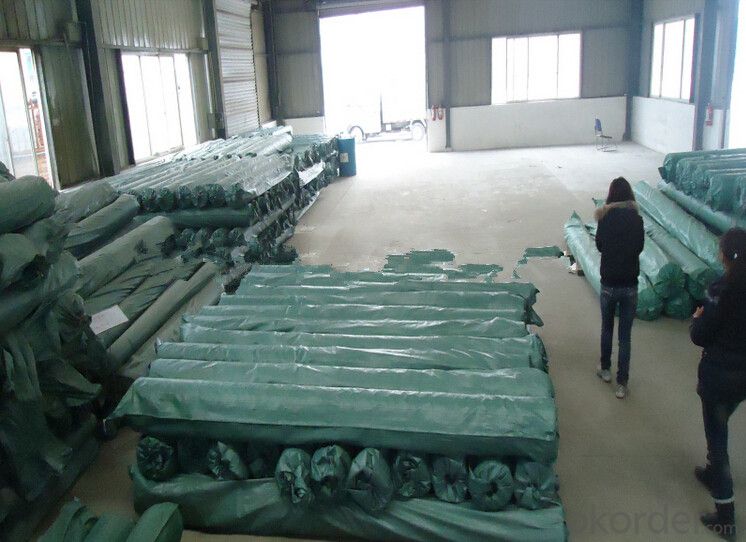
product show
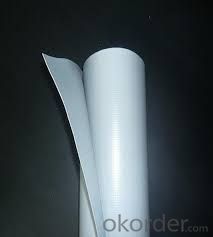
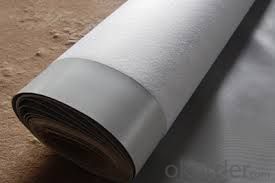
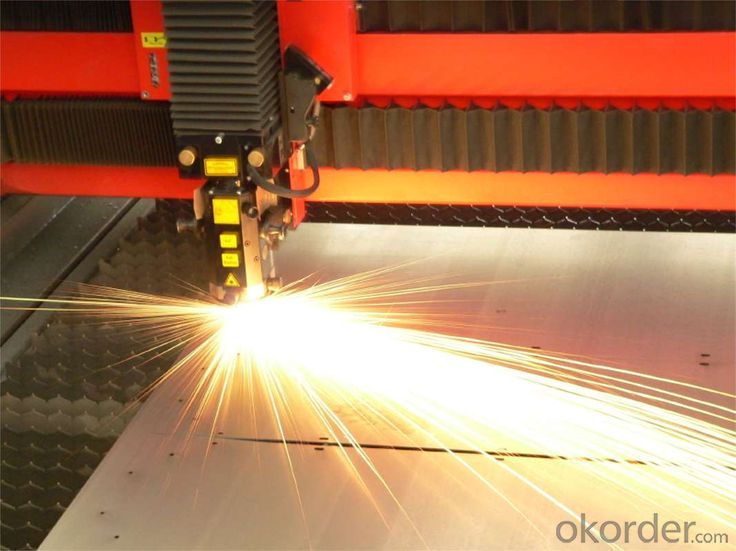
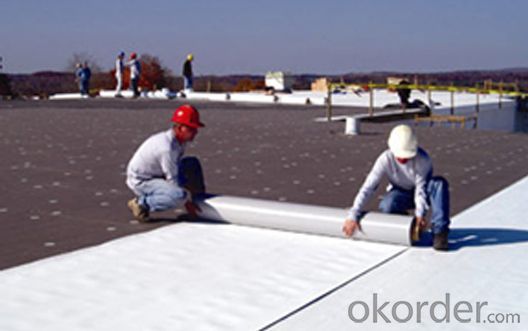
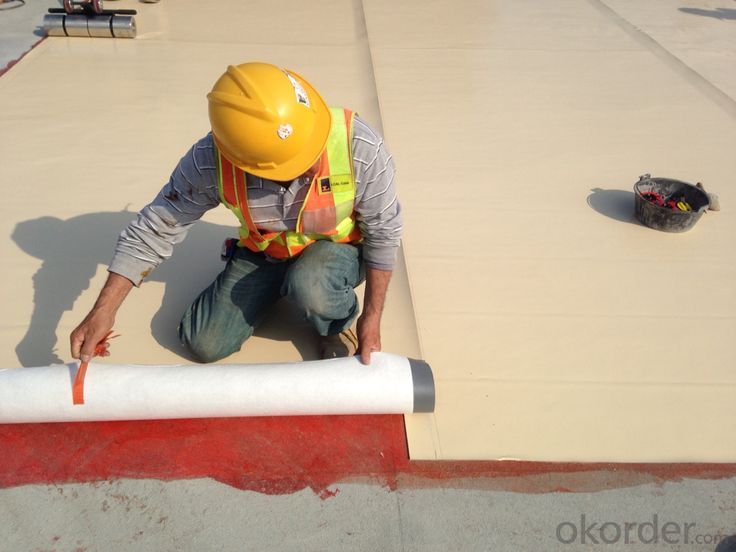
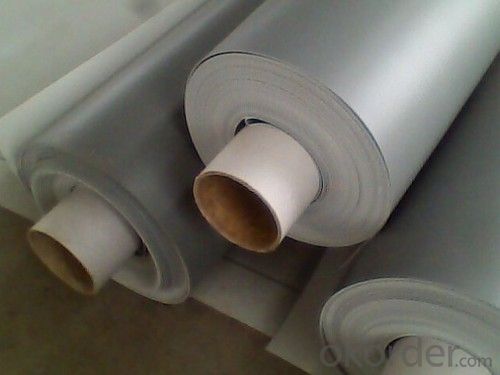
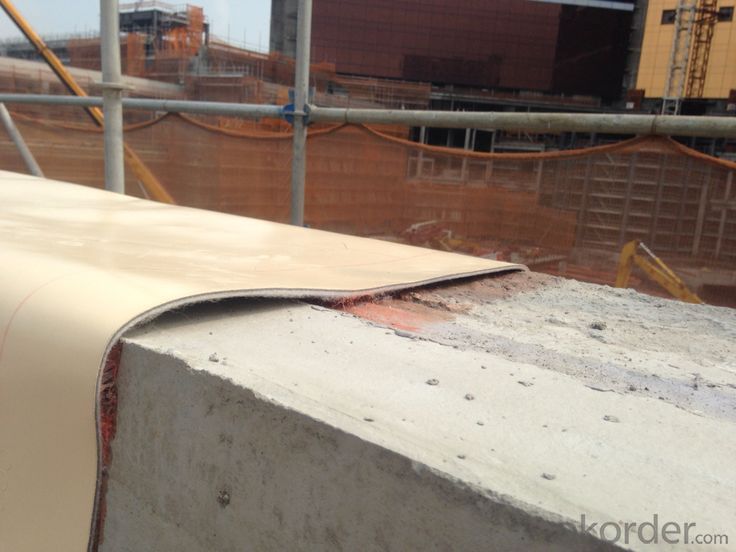


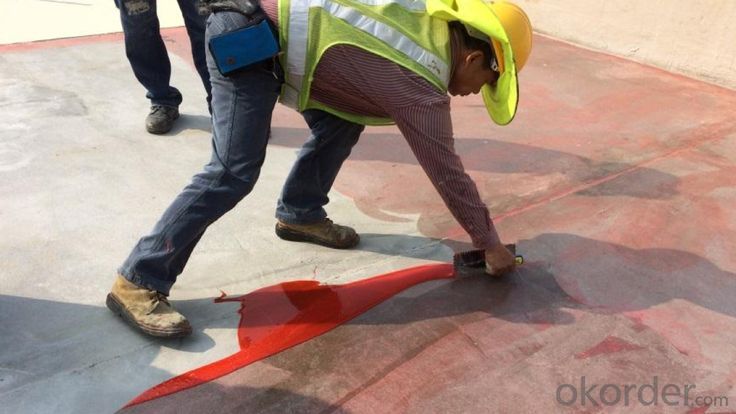
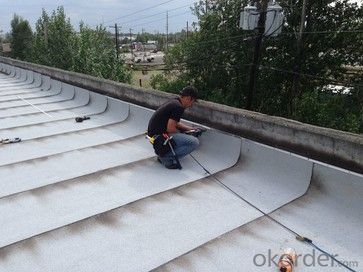
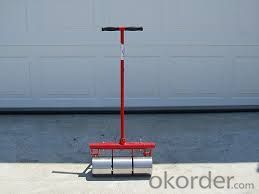
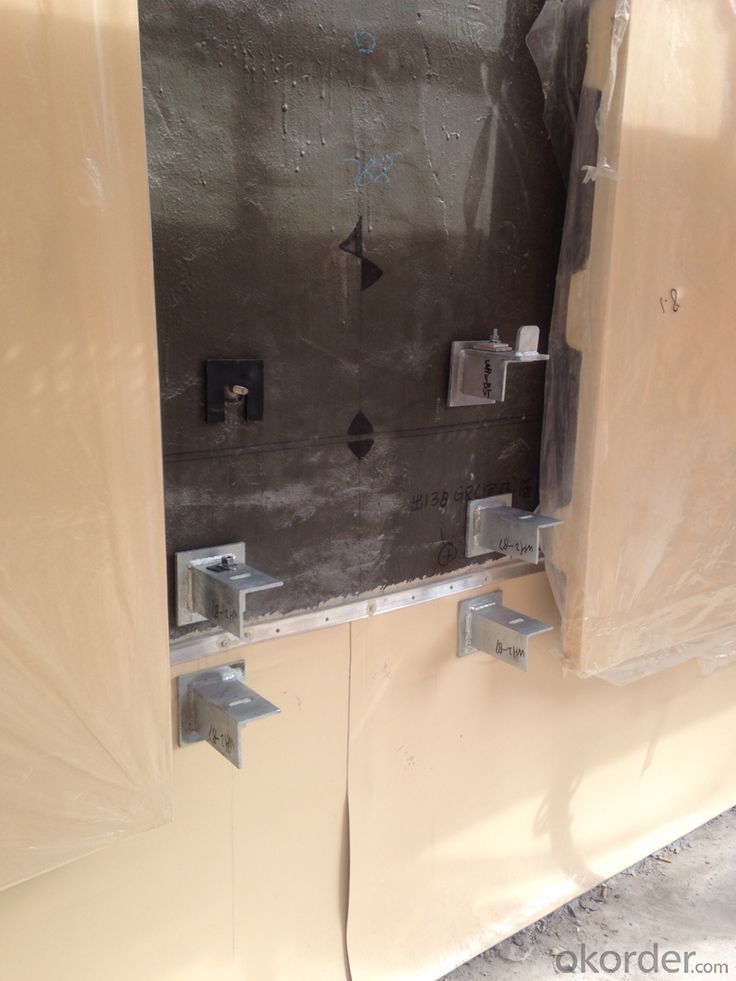

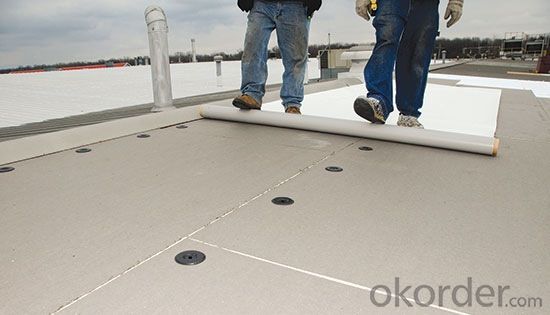
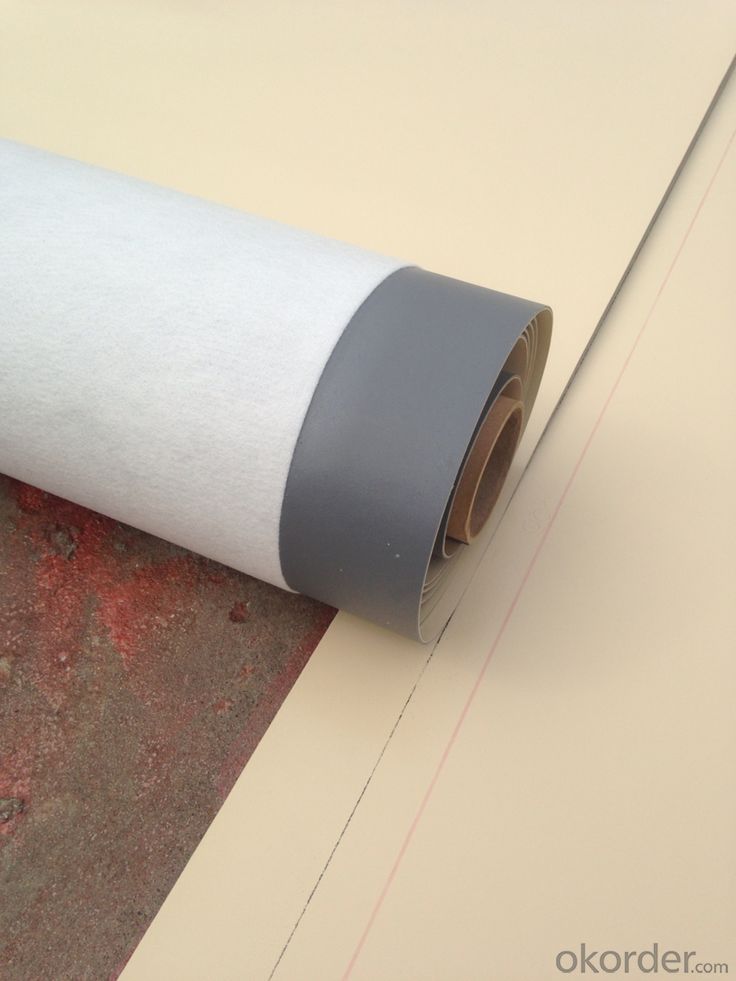
FAQ
Q: What's the delivery time ?
A: 3-5 days for 1-600 rolls, 10-15 days for container.
Q: What's the payment terms ?
A: TT/LC
Q: How do you make replacement with quality problems ?
A: New replacement will be packed into your next order or send to you directly after receive video or photo about quality problems.
- Q: Can a waterproofing membrane be used in residential buildings?
- Absolutely, residential buildings can indeed utilize a waterproofing membrane. In fact, it is highly advisable due to its ability to effectively block moisture, thus preventing any water-related harm or growth of mold. Areas in residential buildings that are prone to water exposure, such as basements, bathrooms, roofs, and balconies, commonly employ waterproofing membranes. These membranes are typically applied on either the exterior or interior surfaces, creating a protective layer that hinders water infiltration. Consequently, this aids in preserving the building's structural integrity, prolonging its lifespan, and augmenting the overall comfort and safety of its inhabitants. Therefore, incorporating a waterproofing membrane into residential buildings is a prudent investment for safeguarding against potential water-related complications.
- Q: Can a waterproofing membrane be used for underground utilities?
- Yes, a waterproofing membrane can be used for underground utilities. It provides a protective barrier against water infiltration, preventing potential damage or deterioration to the utilities.
- Q: Can a waterproofing membrane be applied on top of existing waterproofing systems?
- Yes, a waterproofing membrane can be applied on top of existing waterproofing systems. In some cases, there may be a need to add an additional layer of protection or enhance the existing waterproofing system. Applying a new waterproofing membrane on top can provide an extra barrier against water penetration and help extend the lifespan of the waterproofing system. It is important to ensure proper preparation of the existing surface before applying the new membrane to ensure good adhesion and effectiveness. Additionally, consulting with a professional or manufacturer's guidelines can provide specific recommendations for the compatibility and application process of the new waterproofing membrane.
- Q: Can a waterproofing membrane be used on precast stainless steel surfaces?
- Yes, a waterproofing membrane can be used on precast stainless steel surfaces. Waterproofing membranes are designed to create a barrier against water penetration, regardless of the substrate material. The membrane can be applied directly to the stainless steel surface to provide protection against moisture, preventing leaks and potential damage. It is important to select a suitable waterproofing membrane that is compatible with stainless steel and has good adhesion properties. Additionally, proper surface preparation and application techniques should be followed to ensure optimal performance of the membrane.
- Q: Can waterproofing membranes be used on utility manholes?
- Yes, waterproofing membranes can be used on utility manholes. Waterproofing membranes are specifically designed to provide a barrier against water infiltration, making them suitable for use in areas where water is present, such as manholes. These membranes are typically applied to the walls and floors of the manhole to prevent water from seeping through and causing damage to the structure or the utilities within. By effectively sealing off the manhole, waterproofing membranes help to maintain the integrity and functionality of the utilities and prevent water-related issues such as corrosion, leaks, and the degradation of materials. Additionally, waterproofing membranes can also provide protection against other elements such as chemicals, gases, and soil contaminants that may be present in or around the manhole. Therefore, using waterproofing membranes on utility manholes is a common practice to ensure their long-term durability and functionality.
- Q: Sbs waterproof sheet and app coil how to see it
- APP is a plastic body modified asphalt waterproofing membrane referred to, usually also known as APP modified asphalt waterproofing membrane, is a polyester felt, glass fiber mat or glass fiber reinforced polyester felt for the fetal base, random poly (APAO, APO, etc.) as a petroleum asphalt modifier, both sides covered with insulating materials made of building waterproofing membrane, product markings according to the following procedures: name, model, fetal base , The upper surface material, the lower surface material, the thickness, the area and the standard number, for example: 3mm thick, 10 square meters, the upper surface of the mineral pellets, the lower surface of the polyethylene film, polyester fetal base, Modified asphalt waterproofing membrane marked as: APP I PY M PE 3 10 GB18243-2008.
- Q: Can waterproofing membranes be used on concrete slabs?
- Yes, waterproofing membranes can be used on concrete slabs. In fact, it is a common practice to apply waterproofing membranes to concrete slabs to protect them from water damage. Waterproofing membranes are designed to create a barrier that prevents water from penetrating the concrete surface. This is especially important for areas that are exposed to moisture, such as basements, balconies, or swimming pools. By applying a waterproofing membrane, the concrete slab is protected from water infiltration, which can lead to cracks, erosion, or mold growth. Additionally, waterproofing membranes can also enhance the overall durability and lifespan of the concrete slab.
- Q: Can a waterproofing membrane be used in foundations?
- Yes, a waterproofing membrane can be used in foundations. Waterproofing membranes are commonly used in construction to prevent water penetration into the foundation walls and basement areas. These membranes are designed to create a barrier against moisture, helping to protect the foundation from water damage and potential leaks.
- Q: How does a waterproofing membrane handle joint or crack movements?
- A waterproofing membrane is designed to handle joint or crack movements by being flexible and elastic. It is constructed using materials that can stretch and move with the underlying structure, allowing for expansion and contraction without compromising the watertight seal. This flexibility ensures that the membrane can accommodate any movements in the joints or cracks, preventing water from seeping through and causing damage. Additionally, some waterproofing membranes have added features such as reinforcement or bridging capabilities, which further enhance their ability to handle joint or crack movements. Overall, a waterproofing membrane is specifically engineered to effectively seal and protect against water intrusion while accommodating any movements in the joints or cracks of a structure.
- Q: Asphalt composite tire flexible membrane is SBS
- The normal SBS membrane is in the high-grade waterproofing membrane, and asphalt composite tire flexible waterproofing membrane is a low-grade materials, the national industrial policy will soon stop its application in the field of engineering.
Send your message to us
Chinese Manufacturer Used In Roof PVC Waterproof Membrane
- Loading Port:
- Tianjin
- Payment Terms:
- TT OR LC
- Min Order Qty:
- 2000 m²
- Supply Capability:
- 10000 m²/month
OKorder Service Pledge
OKorder Financial Service
Similar products
Hot products
Hot Searches
Related keywords





